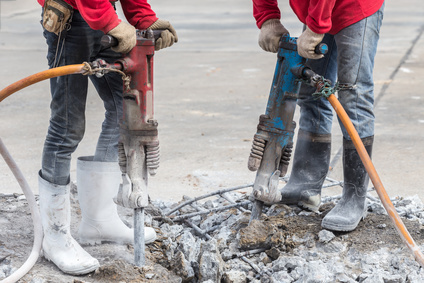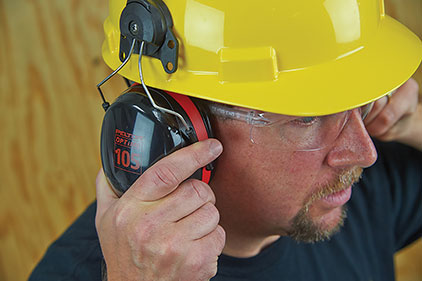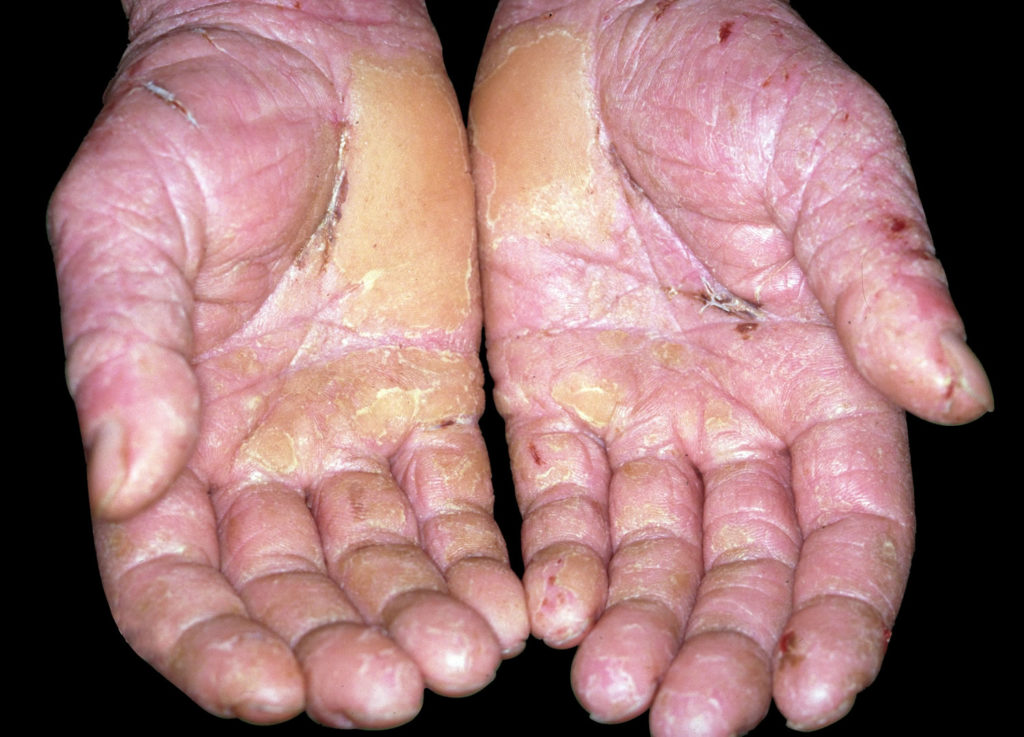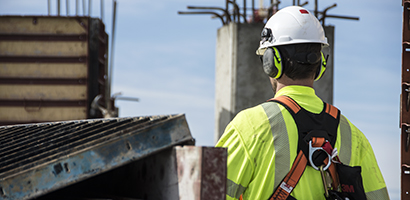Health Surveillance for Construction Workers
Health surveillance is a means of detecting any harmful changes to someone’s health as early as possible to help identify if corrective action is needed. It is a statutory risk-based system of ongoing health checks when exposing workers to harmful substances or activities. It allows an employer to identify any ill health symptoms early and highlights any controls or safety equipment that may need improving. Employers have a legal duty to reduce the risks to the health and safety of employees and others who may be affected by work activity.
The construction sector is a complex environment as both the workplace and workforce are non-static. There are still common requirements of Health and Safety legislation and objectives for occupational disease reduction. Minimum standards are advised for health monitoring/surveillance for Hand Arm Vibration Syndrome, Noise Induced Hearing Loss, Dermatitis and Respiratory diseases.
The Health and Safety Executive (HSE) estimates that 2,000,000 people in the UK currently suffer from an illness caused by, or made worse by their working environment. The HSE reported that in 2006 the construction industry has the second highest rate of self-reported illness attributed to work at 3,800 cases per 100,000 employed persons. Sickness and ill-health can have a significant impact on the productivity of a business.
Hand-Arm Vibration Syndrome
Hand Arm Vibration is vibration transmitted from work processes into workers hands and arms. It can be caused by operating hand-held power tools, hand-guided equipment or by holding materials being processed by machines. When a worker is regularly exposed to Hand Arm Vibration it can lead to a combination of neurological, vascular and musculoskeletal symptoms known as Hand-Arm Vibration Syndrome (HAVS). This is usually developed by those whose work process regularly means using a vibrating tool.

Identifying signs and symptoms of HAVS as early as possible is crucial to preventing serious long-term health effects. It can be prevented but once the damage is done it is permanent and it can be serious and disabling. The cost to employees and employers of inaction can be high. There are simple and cost-effective ways to eliminate the risk of HAVS.
Where a risk assessment has highlighted the need for HAV health surveillance, then steps to prevent it should be implemented. This includes firstly administering a pre-placement questionnaire and administering an annual questionnaire to all workers. The questionnaires can be kept in employees’ files and if any changes take place or the questionnaires indicate possible symptoms, a copy can be forwarded to an occupational health provider who will then refer you to a nurse for assessment and then a doctor for diagnosis. It is also recommended that all employees exposed to HAV should be assessed by a nurse or doctor every few years whether symptoms have been reported or not.
Noise Induced Hearing Loss
PBC today reported that 17,000 people in the UK suffer deafness, ringing in the ears or other ear conditions caused by excessive noise at work. A study by the Building Safety Group (BSG) found that there has been 25% increase in the number of noise infringements occurring on construction sites in the first half of 2019. Exposure to high noise infringements can cause permanent hearing damage for construction workers. Often those who suffer don’t become aware of the problem until its too late.
Chris Chapman, technical support manager for the BSG, told PBC today that “Exposure to many different sources of noise on a construction site has a culminative effect and can cause damage, even if a worker is only exposed for a short period of time.” He adds “ under the Control of Noise at Work Regulations 2005, employers have a duty to protect workers and take steps to reduce the risk.”

Health Surveillance in the form of audiometric (hearing) tests are mandatory for all UK employees who are exposed to noise levels of 85dB or above regularly as per the HSEs Noise at Work regulations. A pre-placement assessment should take place for each new employee to establish a baseline of hearing. Annual audiometry tests should be undertaken for the first few years of employment and after that every few years an audiometry test should take place. By comparing the results of each test, you can see over the years if any Noise Induced Hearing Loss has taken place. This helps employers to implicate early intervention if any employees showing signs of hearing loss and also helps them to see if the noise protection equipment, they provide their workers is doing an effective job.
Skin Disorders
Occupational skin disease is a disease which has developed due to exposure to a physical, chemical or biological agent in the workplace. There are many different types of occupational skin disorders such as: contact dermatitis or eczema, acne and folliculitis, pigmentation changes, contact urticaria, skin infections and skin cancer. Work related dermatitis forms 80% of occupational skin diseases. A person is most likely to be affected on the hands and arms because these are the places most often exposed to these hazardous agents; however, you can get it anywhere.

Solvents and abrasive cleaners, wet cement, paints, adhesives and other materials commonly used in construction can all lead to contact dermatitis. The main hazard is cement dust mixed with sand or other substances to make cement or concrete. Dermatitis results in red or swollen, cracked or itchy skin, as well as inflammation or a rash in the affected area and blisters, burns or flaking skin. If detected early enough and if the worker’s exposure to the trigger substances are reduced, dermatitis may be cured or at least less severe. Left untreated however it may become irreversible and even a small exposure may trigger a bad reaction in the case of sensitized persons, this is known as allergic contact dermatitis.
If a risk assessment has identified that employees are at risk of a skin disease then suitable health surveillance should be put in place. This includes a ‘responsible person’, either a clinician or a person on site who is trained by occupational health practitioners, to carry out regular (at least monthly) skin checks and an annual skin questionnaire. Any employees reporting or showing skin problems must then be referred for a more detailed assessment with an Occupational Health practitioner. These regular checks help employers to provide early intervention for anyone who may be suffering from a skin disorder to prevent it getting worse and inform them on what kind of protective equipment is needed or if the ones they have are working effectively.
Respiratory Disease
Respiratory diseases are contracted when a person breathes in a hazardous substance in the workplace. Construction workers can be at risk of a number of respiratory diseases including: silicosis arising from silica inhalation, pneumoconiosis arising from asbestos exposure, occupational asthma and chronic obstructive pulmonary disease. Some hazards can even cause lung cancer.

Many diseases develop over time, the dust builds up in the lungs and harms them gradually. The effects aren’t always immediately obvious and by the time they are noticed it is often too late, the effects may already by serious and life changing. Construction workers are at a high risk because many common construction tasks create high levels of dust which is damaging to the lungs. The HSE reports that over 500 construction workers are believed to die from exposure to silica every year.
The Lancashire Post reported how a local stonemasonry firm were ordered to pay £18,000 after a worker developed silicosis – a life-threatening and incurable lung disease from inhaling silica dust in work. The HSE found that employees there had been cutting and working with stone for several years without any suitable dust extraction and that the respiratory protective equipment was not adequately controlling workers inhalation exposure. It was also found that the firm had no health surveillance to identify any early signs of effects on workers’ health.
Under the Control of Substances Hazardous to Health Regulations 2002, by law employers have a duty to protect workers who are exposed to these hazardous substances which cause respiratory diseases. Health surveillance should be put in place to keep any eye on employee’s health and highlight if anyone may be suffering early on. Early intervention is key in these types of situations. Spirometry tests should take place regularly to check on employee’s lung function. A baseline test should be done before employment and then regularly (annually) afterwards. Any changes in an employee’s lung function can indicate the presence of occupational respiratory disease.
What can Kays Medical do to help?
Providing Health Surveillance for employees falls under the Considerate Constructors Scheme’s Code of Considerate Practice. Specifically, the ‘Value their Workforce’ clause in which it states they should care for the health and wellbeing of the workforce and provide and maintain high standards of welfare. Health Surveillance also applies to the ‘Secure everyone’s Safety’ clause in which it states they need to have initiatives for continuous safety improvement. Health surveillance helps employers to follow this code as it ensures the health and safety of employees is continually looked after and highlights any areas of safety that need improving.

Occupational Health considers the effects work may have on a person’s health and the effect a person’s health can have on work. It aims to prevent ill health by protecting the health of workers, by controlling occupational diseases and accidents.
Kays Medical offers Occupational Health Surveillance for your workplace. Kays are fully equipped to undertake all of your health surveillance requirements locally or within their nominated health suites. We can conduct spirometry tests, audiometric tests, skin assessments and also train employees on how to assess for skin disorders, as well as assess employees for hand-arm vibration syndrome. We provide all the equipment, information, clinicians and training needed for health surveillance of your employees. Kays Medical Health Surveillance aids the detection of ill-health in employees at an early stage, so employers can introduce better controls to prevent them getting worse. It also helps to identify any lapses in workplace control measures, like safety equipment, on the construction site, so employers can improve these to provide better protection for their workers.
Contact us today for advice on Health Surveillance and to help provide a safer environment for your employees.